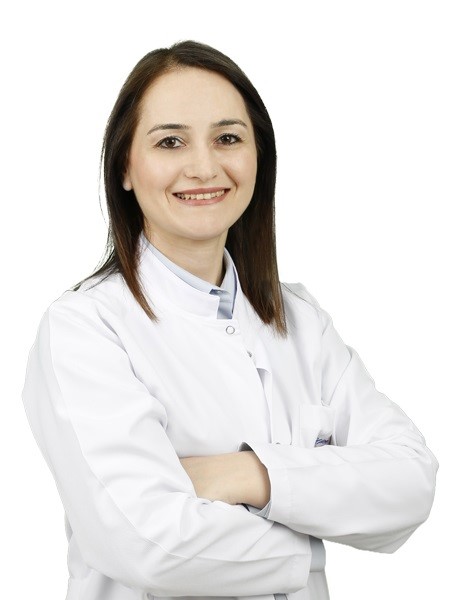
Dermatologist Hatice Gamze Demirdağ reminded that excessive sunbathing and sunburns are one of the causes of mole development and drew attention to the importance of “mole control” when entering winter. Stating that ultraviolet rays, which are intensely exposed in summer, can cause changes in moles, the formation of new moles or the development of cancerous tissue, Uzm. Dr. Demirdağ said, “Therefore, we should look at our skin more carefully. If there are symptoms such as deterioration in symmetry, irregular edges, increase in diameter, enlargement, growth and color change in an existing mole, a dermatologist should be consulted. In addition, newly emerging and growing moles that were not on the skin before and non-healing formations that cause bleeding and crusting are also important and should be consulted by a dermatologist.”
Acıbadem Kent Hospital Dermatology Specialist Assoc. Prof. Dr. H. Gamze Demirdağ stated that we should be alert about the changes that may occur in our skin and gave information about moles that may pose a life risk. Noting that moles are benign formations that occur congenitally or later on our skin in brown, black, skin tones, which can be oval or round in shape, flat or raised, Uzm. Dr. Demirdağ said:
“Some moles are congenital, while others appear in childhood and adulthood. One of the reasons for the formation of moles is genetic factors. Some families are predisposed to the formation of many moles on the skin. Apart from this, intense exposure to the sun and sunburns are also the causes of mole development. Although moles are generally benign formations, the importance of moles is that a skin cancer called melanoma develops over it or melanoma appears on normal skin by resembling mole tissue. Light skin color, light hair and eye color, having many moles on the body, exposure to intense sunlight, solariums used for tanning, sunburns with blisters and genetic factors pose a risk for the development of melanoma. Sun rays trigger not only melanoma cancer but also non-melanoma skin cancers.”
“Has the number of your moles increased?”
Pointing out that there are a considerable number of people sunbathing on the beaches even at the peak hours of the sun in the summer in order to have a bronze skin, Assoc. Prof. Dr. Demirdağ said that one of the most important checks that can be done on behalf of health when entering winter will be mole control. Emphasizing that since ultraviolet rays, which are intensely exposed in summer, can cause changes in moles, the formation of new moles or the development of cancerous tissue, the skin should be looked at more carefully. Dr. Demirdağ said, “If there are symptoms such as deterioration in symmetry, irregular edges, increase in diameter, enlargement, growth and color change in an existing mole, a dermatologist should be consulted. In addition, newly emerging and growing moles that were not on the skin before and non-healing formations that cause bleeding and crusting are also important and should be consulted by a dermatologist.”
“Develop familiarity with your own selves”
Stating that people should develop familiarity with their own moles in order to recognize the changes that may occur in their moles, Assoc. Prof. Dr. Demirdağ continued his words as follows: “For this familiarity, we recommend that people examine their own skin periodically. Except for the places visible to the eye, places such as the back, back of the legs and genital area should be examined with the help of a mirror. In case of doubt, a dermatologist should be consulted. People who have risk factors for skin cancer, who have a family or personal history of skin cancer and who have many moles on their body should be followed up with mole screening. Moles are examined with a dermatoscope and moles are photographed, enlarged and examined in detail with a digital procedure called computerized dermatoscopy. The image of the moles is recorded and the changes in the moles can be monitored with monthly or annual follow-ups that can be adjusted according to the individual. If there is a suspicious situation in the moles, surgical mole removal is performed. The digital scanning and mole mapping process allows early diagnosis and therefore early treatment in skin cancer.”
“Protective also in winter”
On the other hand, Demirdağ emphasized the necessity of using sunscreen in winter. Noting that sun protection has an important place in moles and skin cancer, where the sun plays a major role as a risk factor, Assoc. Prof. Dr. Demirdağ said, “Sunscreen cream should be used not only in summer but also in winter. It is appropriate to use sunscreen creams with a sun protection factor of 50 in summer and sun protection factor of at least 30 in winter. In the summer months, care should be taken to prevent sunburn, especially for our children, and staying under the sun should be avoided during the hours when ultraviolet rays come steeply.”
İHA Haber Kodu: 20241110AW326084